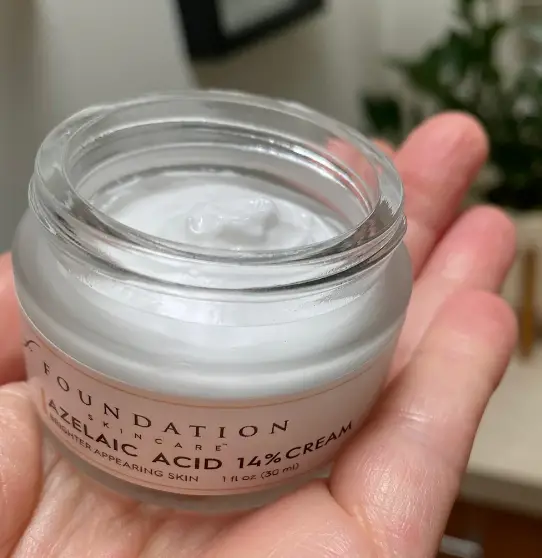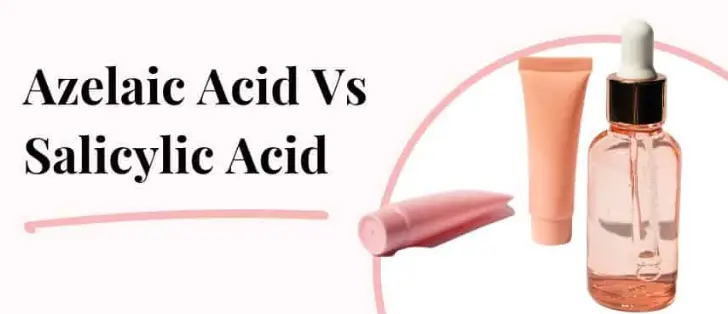When it comes to skincare, acids are crucial ingredients that target a variety of skin concerns. Azelaic acid and salicylic acid are two popular types, each with unique benefits and uses. Their differences and applications can significantly influence your skincare routine and outcomes.
Azelaic acid is a dicarboxylic acid that is effective for reducing inflammation, killing bacteria, and helping to renew the skin. On the other hand, salicylic acid is a beta hydroxy acid known primarily for its ability to penetrate into pores to dissolve debris and promote clear skin. These properties make them suitable for treating different skin conditions and concerns.
While both acids are beneficial, they serve distinct purposes. Azelaic acid is exceptional for calming sensitive skin and evening out skin tone, whereas salicylic acid is excellent for deep cleansing and targeting acne-prone areas. Choosing the right acid depends on understanding these differences and how they can best serve your specific skin needs.

Azelaic Acid Explained
What is Azelaic Acid?
Definition and Source
Azelaic acid is a naturally occurring dicarboxylic acid that is derived from grains such as barley, wheat, and rye. It is also produced by yeast that normally lives on healthy skin. As a skincare ingredient, azelaic acid is manufactured in laboratories to ensure its purity and effectiveness for cosmetic use.
Key Properties
Azelaic acid is known for its anti-inflammatory and antibacterial properties. It helps to reduce redness and clear bacterial skin infections, which contribute to its effectiveness in treating various skin conditions. Additionally, it has anti-keratinizing actions, which means it helps to prevent the buildup of dead skin cells that can lead to acne.
Benefits of Azelaic Acid
Skin Benefits
- Reduces pigmentation: Azelaic acid is effective in treating melasma, post-inflammatory hyperpigmentation, and other forms of skin discoloration.
- Soothes inflammation: It is excellent for calming the skin, reducing redness, and easing the discomfort of skin conditions like rosacea.
- Antibacterial effects: Helps reduce acne-causing bacteria on the skin, making it a valuable addition to acne treatment routines.
Common Uses in Dermatology
Dermatologists often recommend azelaic acid for:
- Acne treatment: Due to its ability to reduce bacteria and inflammation.
- Rosacea management: It decreases inflammation and redness associated with rosacea.
- Skin lightening: Helps to even out skin tone by treating hyperpigmentation effectively.
Products with Azelaic Acid
Types of Products Available
Azelaic acid is available in various formulations:
- Creams and gels: Typically used for treating acne and rosacea.
- Foams: Useful for scalp and body applications.
- Serums: Often combined with other ingredients like niacinamide for enhanced skin brightening effects.
Tips for Choosing
- Concentration: Look for products containing 10% to 20% azelaic acid, as these concentrations are effective yet generally well tolerated.
- Skin type compatibility: Choose a formulation that suits your skin type—gel for oily skin, cream for dry skin.
- Complementary ingredients: Products that combine azelaic acid with other beneficial ingredients like niacinamide or glycerin can provide additional benefits.
Salicylic Acid Explained
What is Salicylic Acid?
Definition and Chemical Structure
Salicylic acid is a beta hydroxy acid (BHA) known for its ability to penetrate into the pores of the skin. Chemically, it is a colorless, crystalline organic acid. It is soluble in oil, which enables it to easily penetrate and clear clogged pores.
Key Properties
Salicylic acid’s primary property is its exfoliant capability. It works by dissolving the type of skin debris that clogs pores and causes acne. Moreover, it has anti-inflammatory properties that help reduce the redness and swelling associated with breakouts.
Benefits of Salicylic Acid
Skin Benefits
- Prevents clogged pores: It penetrates into pores to dissolve dead skin cells and other impurities.
- Reduces acne: By clearing pores, it prevents acne formation and minimizes existing pimples.
- Soothes irritated skin: Its anti-inflammatory effects help soothe and calm irritated skin.
Common Uses in Skincare
Salicylic acid is widely used in:
- Acne treatments: From spot treatments to full-face applications.
- Exfoliating products: In face washes, peels, and scrubs to maintain clear and smooth skin.
- Scalp treatments: Helps manage dandruff and other scalp conditions due to its exfoliating properties.
Products with Salicylic Acid
Types of Products Available
Salicylic acid is included in various skincare products:
- Cleansers: Effective for daily pore-clearing treatments.
- Toners: Used post-cleansing to further remove residual debris.
- Spot treatments: Concentrated formulas applied directly to blemishes.
Tips for Choosing
- Strength: Choose a product with a concentration of 0.5% to 2% salicylic acid for facial skincare.
- Skin sensitivity: If you have sensitive skin, start with lower concentrations and monitor your skin’s response.
- Additional benefits: Look for products that contain hydrating or soothing ingredients to counteract potential dryness or irritation from salicylic acid.
Comparing Effects on Skin
Acne Treatment
How Each Acid Treats Acne
Azelaic acid and salicylic acid both target acne but in different ways. Azelaic acid reduces acne by killing bacteria that infect skin pores and decreasing the production of keratin, a natural substance that can lead to the development of acne. Salicylic acid works primarily by exfoliating the skin and penetrating deep into the pores to dissolve dead skin cells and sebum, preventing the formation of pimples.
Comparative Effectiveness
Salicylic acid is often more effective for those with oily skin as it helps to remove excess oil. Azelaic acid is better suited for sensitive skin types or those who experience inflammation along with acne. Both acids can be highly effective; the best choice depends largely on your skin type and the severity of your acne.
Skin Brightening
Effects on Skin Pigmentation
Azelaic acid is renowned for its ability to lighten skin pigmentation and even out skin tone by inhibiting the production of melanin. Salicylic acid also promotes skin brightening but does so more through exfoliation, helping to remove darkened layers of skin cells.
Comparative Results
While both acids assist in skin brightening, azelaic acid is particularly effective for more permanent hyperpigmentation issues, such as melasma or post-inflammatory hyperpigmentation. Salicylic acid may provide quicker results for superficial skin brightening, making it ideal for those with less persistent forms of pigmentation.
Sensitivity and Irritation
Potential for Causing Irritation
Salicylic acid, being a BHA, can be more irritating to the skin, especially at higher concentrations. It may cause dryness and peeling, particularly in sensitive skin types. Azelaic acid is generally better tolerated and can be used even by those with rosacea and highly sensitive skin.
Safe Usage Practices
To minimize irritation:
- Start with lower concentrations and gradually increase as your skin adapts.
- Alternate days when first introducing acids into your skincare regimen.
- Use soothing ingredients like hyaluronic acid or ceramides in conjunction with these acids to help maintain skin hydration and barrier function.
Ideal User Profiles
Best Candidates for Azelaic Acid
Individuals with sensitive, prone to redness, or rosacea-affected skin find azelaic acid a boon. It’s also highly effective for darker skin tones looking to address hyperpigmentation without the risk of aggravating the skin.
Examples of Ideal Scenarios
- Individuals with rosacea looking for an anti-inflammatory and antibacterial treatment.
- Those with darker skin tones who are managing melasma.
Best Candidates for Salicylic Acid
Salicylic acid is ideal for oily and acne-prone skin types. It works best for those dealing with frequent breakouts, blackheads, and large pores.
Examples of Ideal Scenarios
- A teenager or adult with persistent oily skin and acne.
- Someone struggling with blackheads and visible pores on the nose and forehead.
Combining Both Acids
Pros of Combination
Combining azelaic acid and salicylic acid can harness the benefits of both:
- Enhanced acne treatment: Azelaic acid’s antibacterial properties complement salicylic acid’s pore-clearing effects.
- Improved skin texture and tone: The combination can more effectively brighten the skin and make it appear more uniform.
How to Combine Effectively
To combine these acids safely:
- Use azelaic acid in the morning and salicylic acid at night to minimize potential irritation.
- Monitor your skin’s response closely and adjust usage if excessive dryness or irritation occurs.
Cons of Combination
While combining can be beneficial, it also has risks:
- Increased skin sensitivity: Using both acids can lead to heightened sensitivity, particularly under sun exposure.
- Potential for over-exfoliation: This can disrupt the skin barrier, leading to more severe skin issues.
Precautions to Take
- Always apply sunscreen when using these products, as both acids can increase sun sensitivity.
- Patch test both products to ensure your skin can tolerate the combination without adverse reactions.
Frequently Asked Questions
What is Azelaic Acid?
Azelaic acid is a naturally occurring acid found in grains like barley, wheat, and rye. It’s known for its antibacterial, anti-inflammatory, and skin-renewing properties, making it a favorite for treating rosacea, acne, and hyperpigmentation.
What is Salicylic Acid?
Salicylic acid is a type of phenolic acid and a beta hydroxy acid that works by exfoliating the skin and clearing pores. It is particularly effective against acne because it can penetrate oily skin and clogged pores, reducing breakouts.
Can Azelaic and Salicylic Acids be used together?
Yes, azelaic acid and salicylic acid can be used together in a skincare routine. However, it’s essential to introduce each product slowly and monitor the skin’s response to avoid irritation. Combining these acids can provide comprehensive benefits like enhanced texture, tone, and clarity.
Who should use Azelaic Acid?
Azelaic acid is suitable for those with sensitive skin types, prone to redness and irritation. It is also beneficial for those dealing with melasma or post-inflammatory hyperpigmentation, as it helps to lighten pigmentation safely.
Who should use Salicylic Acid?
Salicylic acid is ideal for individuals with oily and acne-prone skin. Its ability to deep-clean pores makes it effective for those struggling with blackheads and blemishes.
Conclusion
Understanding the distinctive properties and benefits of azelaic acid and salicylic acid is crucial for optimizing your skincare regimen. Each acid offers unique advantages that can significantly enhance the health and appearance of your skin.
By selecting the acid that aligns with your skin type and concerns, you can effectively target and manage your specific skincare issues. Remember, the best choice always involves knowing what each ingredient does and how it can benefit your unique skin needs.

